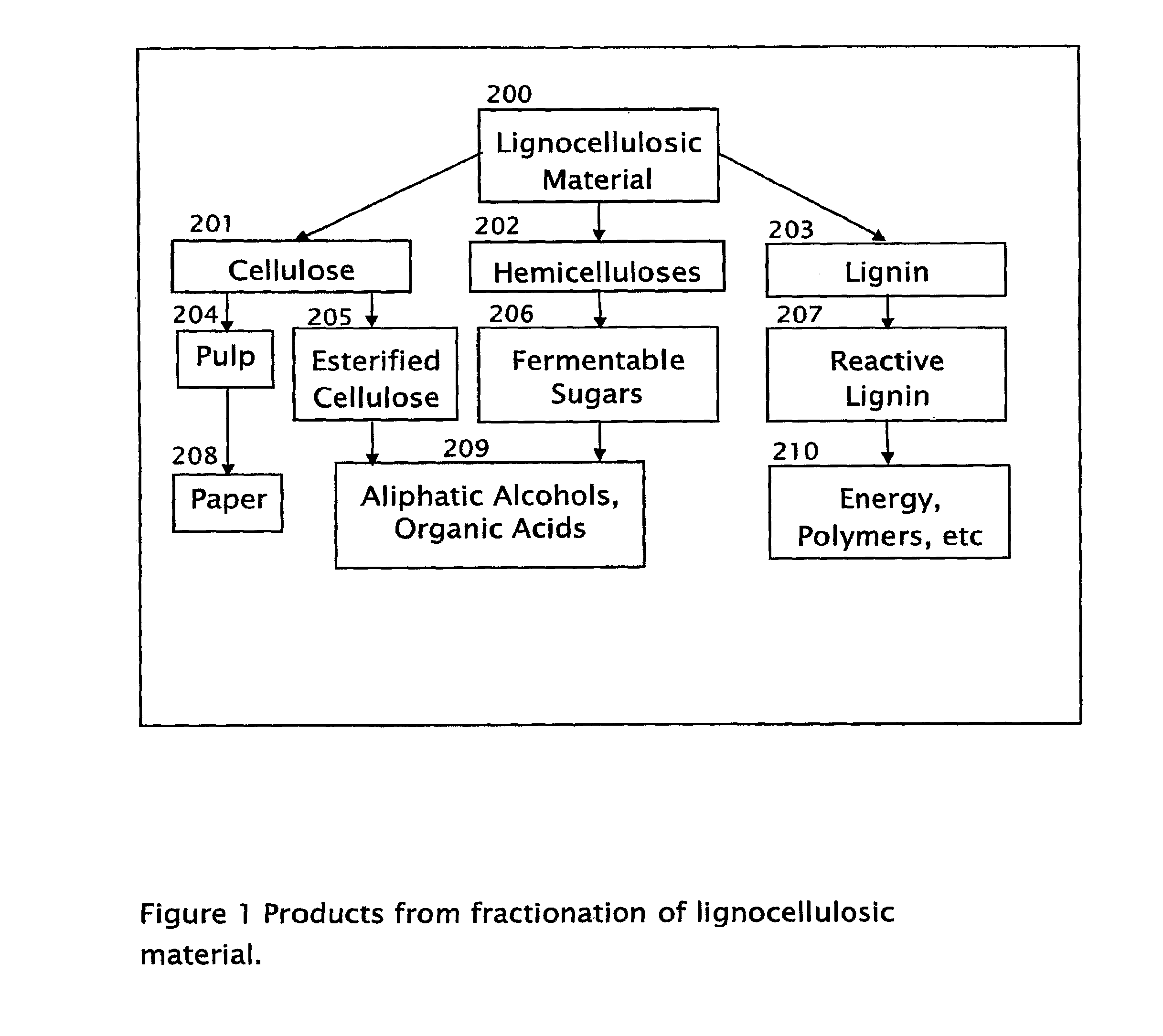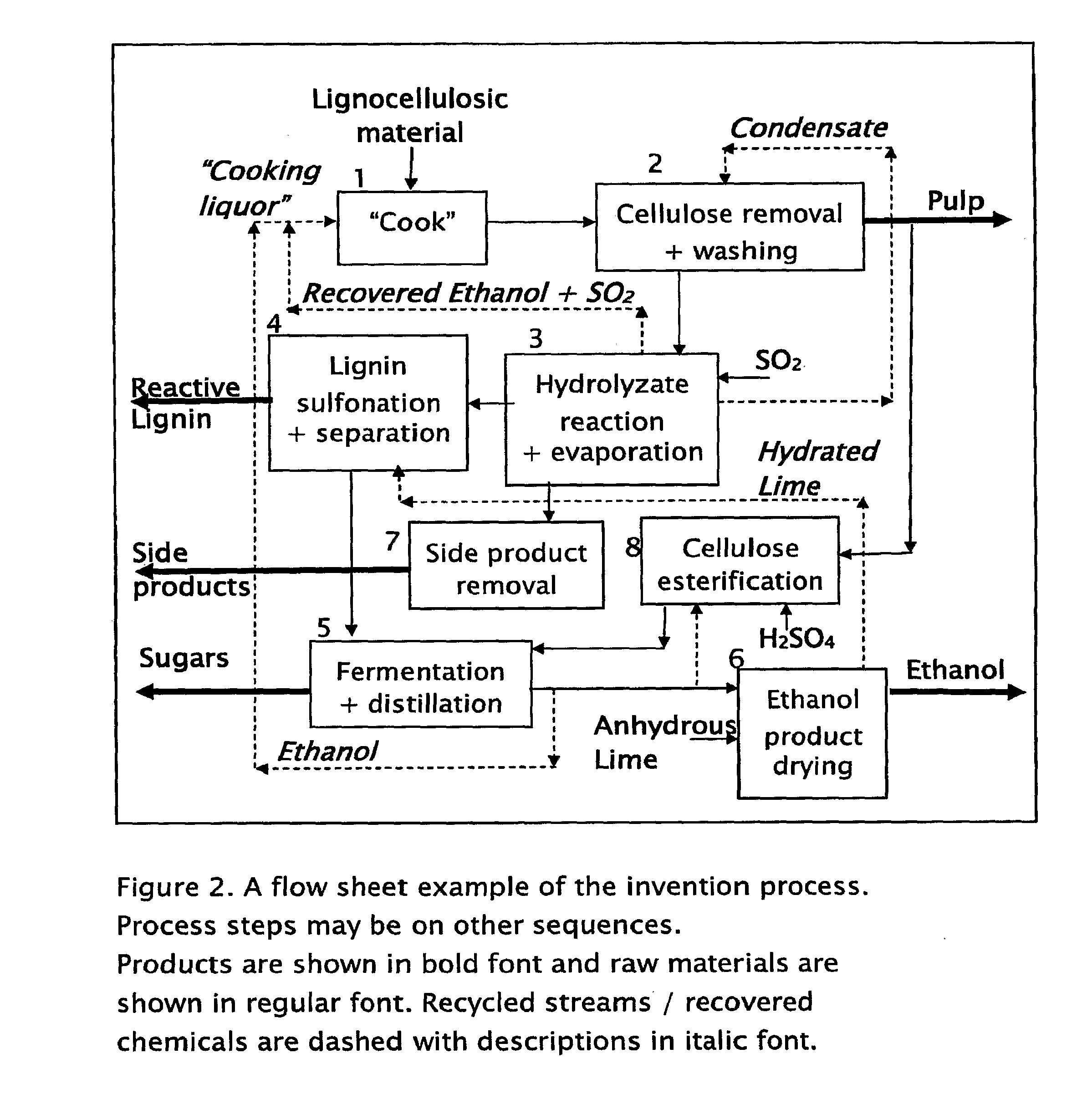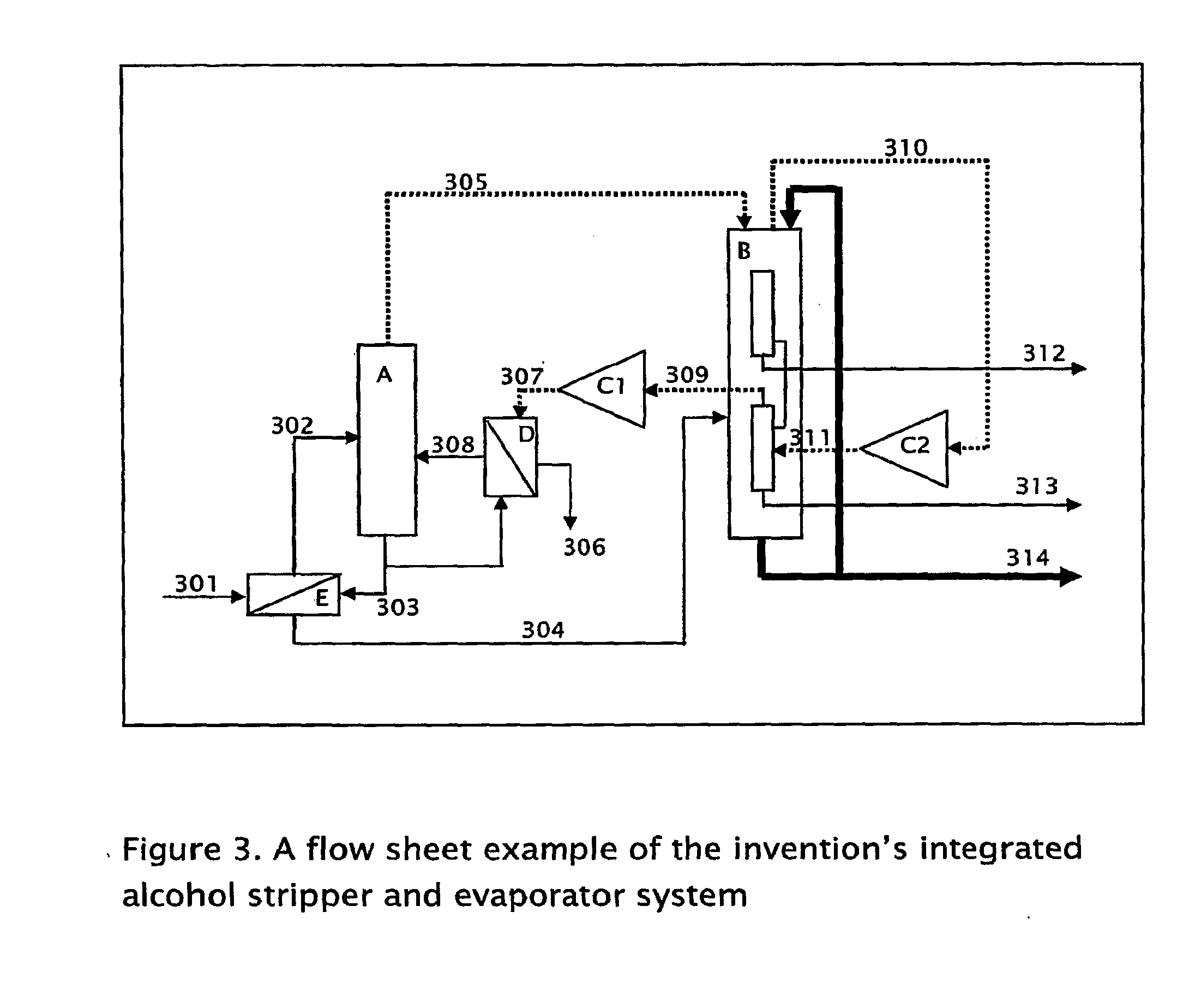Process for the stepwise treatment of lignocellulosic material to produce reactive chemical feedstocks
a technology of reactive chemical feedstocks and lignocellulosic materials, which is applied in the production of saccharides, acid salt/anhydride pulping, and calcium/strontium/barium sulfates, etc. it can solve the problem of low yield of fermentable sugars, no full scale solvent pulping mill, and inability to readily separate lignin, etc. problem, to achieve the effect of reducing effluent discharg
- Summary
- Abstract
- Description
- Claims
- Application Information
AI Technical Summary
Problems solved by technology
Method used
Image
Examples
example 1
[0086]One representative example of a design heat and material balance of the alcohol stripper and evaporator system is given in the following table:
Conden-RegeneratedConden-SugarsateAlcoholsateProductRefer ToStreamFIG. 3No.301302303304305306307308309310311312313314H2Okg / h3923893803801212512512581811279176EtOkg / h505033480.40.40.40.30.3481.90.2Organicskg / h4447444400.050.050.050.20.2−0.50.444Totalkg / h4864864274275912612612682825981220Temp.° C.9711914410648146177101101121119101100Sat. Temp.° C.106146121Pressureatm4.42000.34Et conc.%10.310.30.60.680.20.30.30.30.30.380.82.30.1“Solids”%19.320.010.910.980.20.40.40.40.60.680.02.820.2“Sugars”%9.09.710.410.40.00.00.00.00.20.2−0.80.420.1
example 2
[0087]The following example illustrates the invention for producing ethanol from hemicelluloses, but in no way limits it:
Wood chips of mixed northern pine species, containing 42.68% moisture, were cooked for 180 minutes at 157° C. in a 1 liter Parr reactor. The moisture adjusted cooking liquor consisted of 3% SO2, 48.5% of ethanol and 48.5% water by weight in 6 parts of total liquor to 1 part of dry wood.
[0088]Cellulose was removed representing 37.1% of the original wood mass.
[0089]The monomer sugars represented 61% of the all sugars in the hydrolyzate as determined by autoclaving the hydrolyzate with 4% H2SO4 in 121° C. for 60 minutes, which converted the remaining sugars in their corresponding monomers.
[0090]Half of the hydrolyzate was processed without the final reaction step. Calcium oxide was added to reach pH of 11 in the hydrolyzate and the precipitate containing calcium lignosulfonates was filtered off. The cooking ethanol was distilled off until the boiling point of the dis...
PUM
| Property | Measurement | Unit |
|---|---|---|
| temperatures | aaaaa | aaaaa |
| temperatures | aaaaa | aaaaa |
| energy | aaaaa | aaaaa |
Abstract
Description
Claims
Application Information
 Login to View More
Login to View More - R&D
- Intellectual Property
- Life Sciences
- Materials
- Tech Scout
- Unparalleled Data Quality
- Higher Quality Content
- 60% Fewer Hallucinations
Browse by: Latest US Patents, China's latest patents, Technical Efficacy Thesaurus, Application Domain, Technology Topic, Popular Technical Reports.
© 2025 PatSnap. All rights reserved.Legal|Privacy policy|Modern Slavery Act Transparency Statement|Sitemap|About US| Contact US: help@patsnap.com



